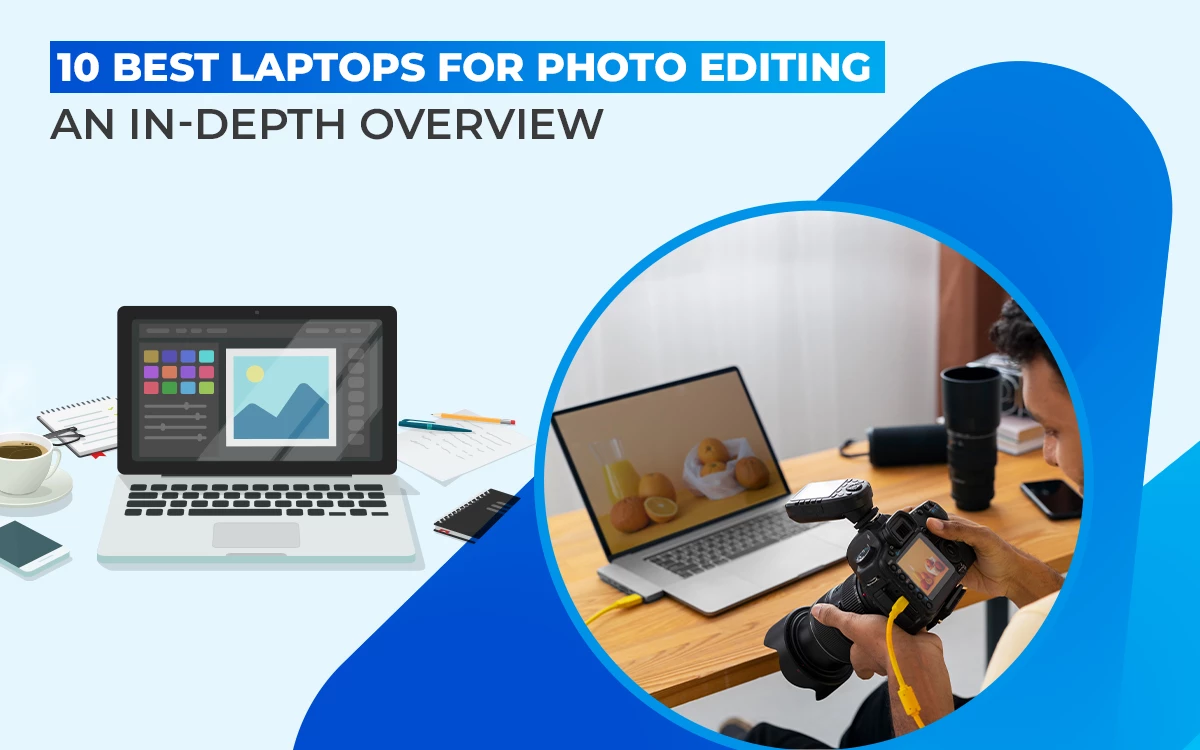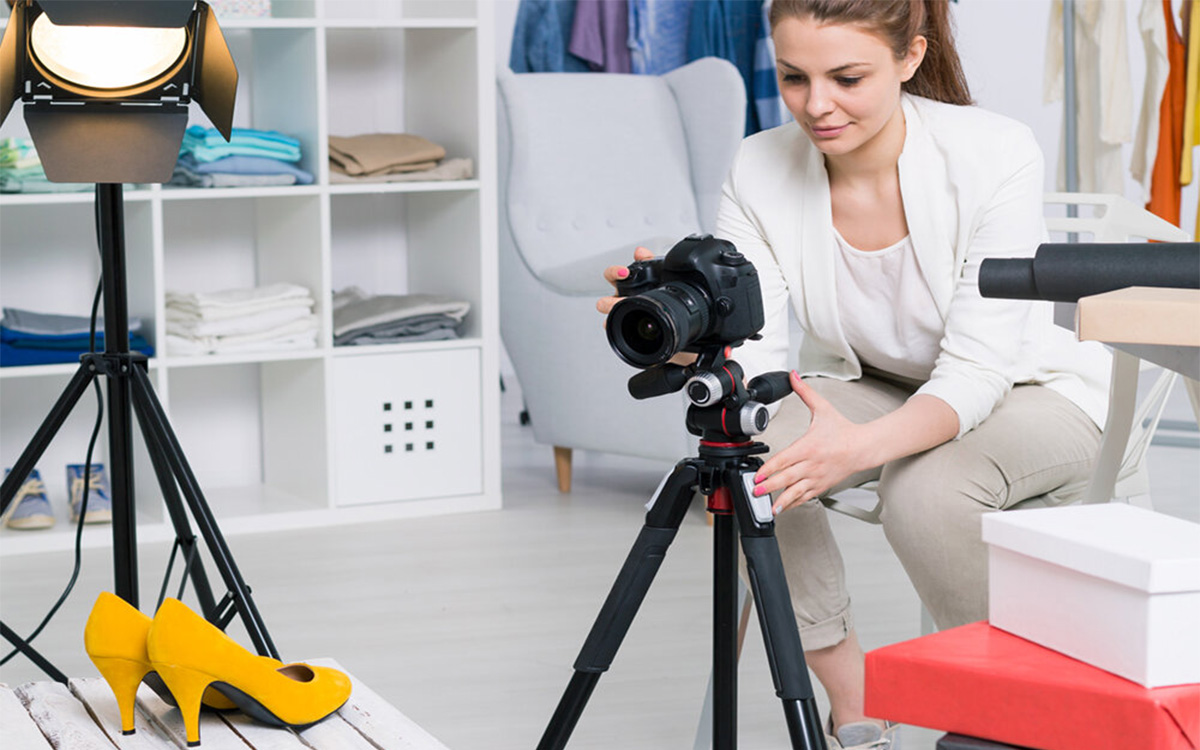The 10 best laptops include Apple MacBook Pro, Asus ProArt P16, Microsoft Surface Laptop Studio 2, Dell XPS 16, and Lenovo Yoga 9i Gen 8, among others. Professional photo editors mostly use a full-fledged desktop setup with powerful tools and premium software for a smooth editing workflow. Advanced laptops offer a nearly similar experience.
To choose the best laptops to edit images, consider their color accuracy display, processor performance, GPU power, RAM, storage speed, port selection, and stylus support.
| SL | Laptop | Price |
|---|---|---|
| 1 | Apple MacBook Pro (16-inch, M4 Pro) | Starts at $2,499 |
| 2 | Asus ProArt P16 | $2899 |
| 3 | Microsoft Surface Laptop Studio 2 | $1,999 (bundle offer) |
| 4 | Dell XPS 16 | $2,299.99 |
| 5 | Lenovo Yoga 9i Gen 8 | Starts at $1,399.99 (varies) |
| 6 | Lenovo ThinkPad P1 Gen 7 | $3,159.00 |
| 7 | ASUS ProArt P16 | Starts at $2,199.99 |
| 8 | Apple MacBook Air 13 M4 | $999 |
| 9 | Apple MacBook Pro 14 M4 | $1,599 |
| 10 | HP OMEN MAX 16 | $2,499.99 |
Table: 10 Best Laptops for Photo Editing
What you’ll learn in this article
- 1 1. Apple MacBook Pro (16-inch, M4 Pro)
- 2 2. Asus ProArt P16
- 3 3. Microsoft Surface Laptop Studio 2
- 4 4. Dell XPS 16
- 5 5. Lenovo Yoga 9i Gen 8
- 6 6. Lenovo ThinkPad P1 Gen 7
- 7 7. Acer Swift Go 14
- 8 8. Apple MacBook Air 13 M4
- 9 9. Apple MacBook Pro 14 M4
- 10 10. HP OMEN MAX 16
- 11 Is it Worth Investing in an Expensive Laptop for Photo Editing?
- 12 How Photo Editing Trends Shape Laptop Requirements?
- 13 What are the Best Computers for Photo Editing?
- 14 FAQ’s
1. Apple MacBook Pro (16-inch, M4 Pro)
Apple’s invention, the 16-inch MacBook Pro with M4 Pro chip, is our first choice for photo editing because of its large and ultra-high-quality display. Creative professionals always prefer Mac for reliability; however, this model is one of a kind for fast processing power, which allows photo editors to edit large raw files, maintain accurate colors, and image quality inside the Apple ecosystem. The MacBook has a unified memory architecture, which makes switching between editing software smooth.
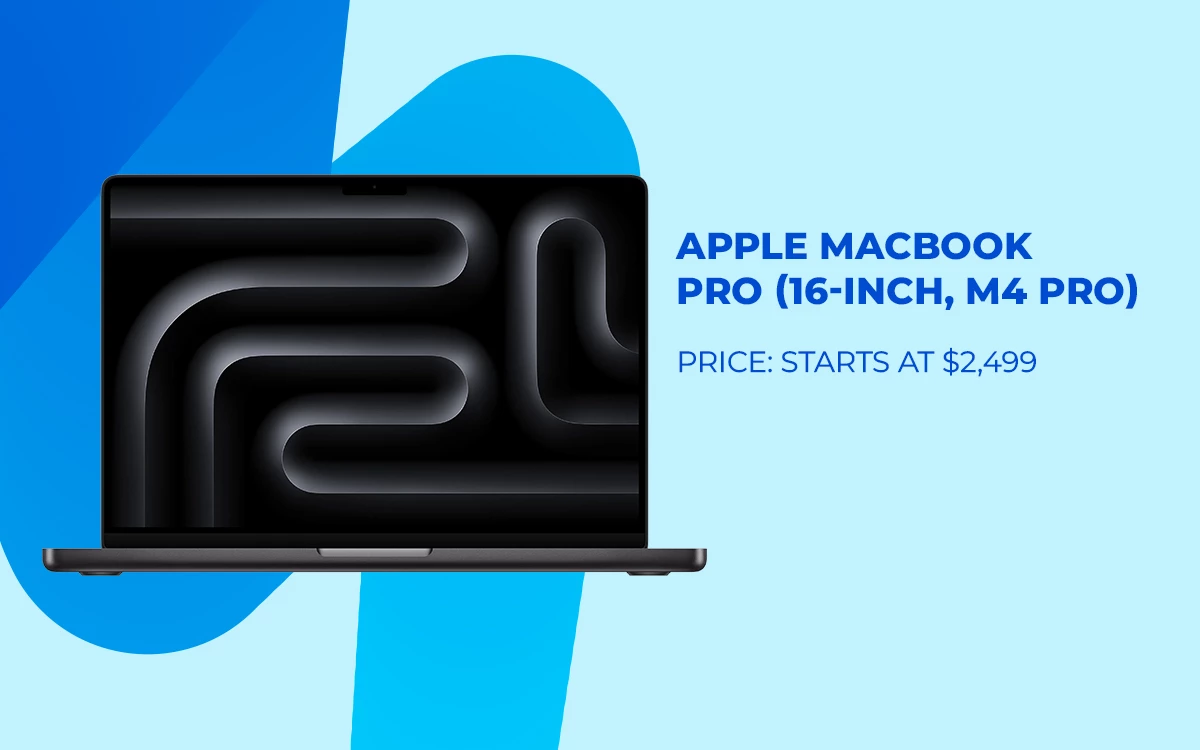
Key Features
- Silent thermal management under heavy load
- Excellent port selection for an external device
- Quiet operation with efficient cooling
- Fast file transfer through the SD slot and Thunderbolt port
- Built-in SD card slot and Thunderbolt ports make file transfers fast and easy
- Liquid Retina XDR display for lifelike colors and deep contrast
- Super-fast M4 Pro chip to handle large RAW files and multitasking without lag
Pros and Cons
| Pros | Cons |
|---|---|
| Ultra-accurate color display | Premium price |
| Long battery life for mobile workflows | The 16-inch chassis is large and heavier for portability |
| Seamless and crash-free creative workflow on macOS | |
| Premium design with high resale value |
2. Asus ProArt P16
The ASUS ProArt P16 is a robust and creator-focused laptop for Windows users. This laptop also has a 16-inch color-accurate display offering high-end performance to support heavy photo-editing workflows. Many image editors use it as an alternative to MacBook Pros because of its stylus support, a 4K OLED screen, and robust I/O for photographers. The p16 laptop is best for visual precision and required speed when you edit large raw files, color grade, or use powerful editing tools such as Photoshop or Lightroom Classic.
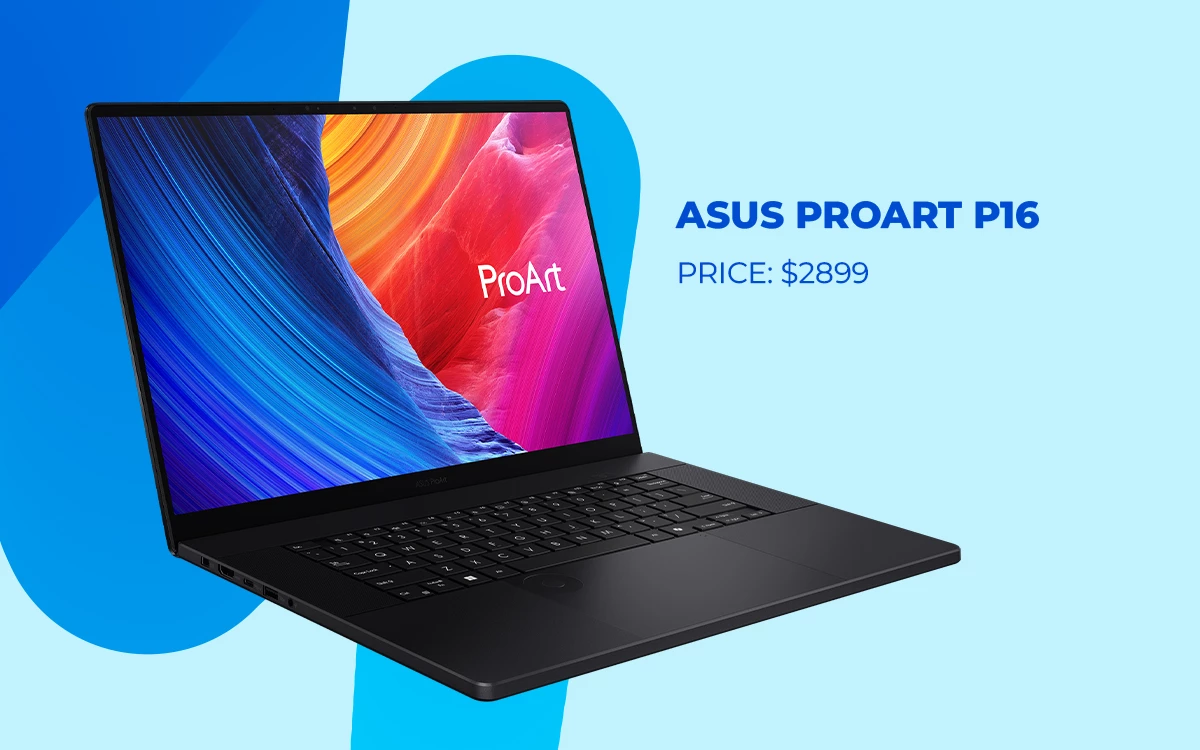
Key Features
- Touchscreen with pen support
- Full-size SD Express card reader
- Dual-fan cooling for stable performance
- 4K OLED display for lifelike image reproduction
- Creator Hub software to calibrate colors and control system performance
- AMD Ryzen AI 9 HX-series CPU for fast rendering and multitasking
- Factory-calibrated and Pantone-validated screen for accurate color matching
Pros and Cons
| Pros | Cons |
|---|---|
| Ideal for color-critical photo editing | A glossy screen may cause reflection |
| Quiet operation even under load | Service center shortage in some locations |
| Balance between performance and mobility | |
| Supports a wide range of ports to simplify editing |
3. Microsoft Surface Laptop Studio 2
Microsoft’s Surface Laptops are widely renowned; among them, Studio 2 is a versatile creator-laptop offering high-performing image editing solutions. It stands out with its screen that converts into a drawing canvas, making it easy for retouching, masking, and stylus-based photo processing. Surface Studio 2 is beneficial for users in digital art, having a hybrid studio or similar workflow, along with image editing. You can access powerful features, flexibility, and connectivity to produce quality output.

Key Features
- Convertible pull-forward display
- Touchscreen with pen support
- Color-accurate PixelSense display
- Built-in SD card reader
- Dynamic hinge flexibility
- Quiet and comfortable keyboard
- Seamless Windows creator tools
Pros and Cons
| Pros | Cons |
|---|---|
| Easy switching between laptop and studio modes | Higher price for its class |
| Allows input through a pen | Stylus sold separately |
| Solid connectivity for the camera and drives | |
| Durable premium chassis for long use |
4. Dell XPS 16
The Dell XPS 16 is a high-end laptop made to fulfill Windows users’ photo-editing needs. Its large and sharp screen, strong graphics, and premium build quality have made it a top choice for editing images for social media, online advertisements, e-commerce photographs, etc. Its 16.3-inch 4K OLED display offers excellent color fidelity and powerful GPU options, so that users can get ample space and performance to work. From processing RAW files, multi-layer edits, to high-resolution exports, the Dell XPS 16 gives portability with studio-level specifications.
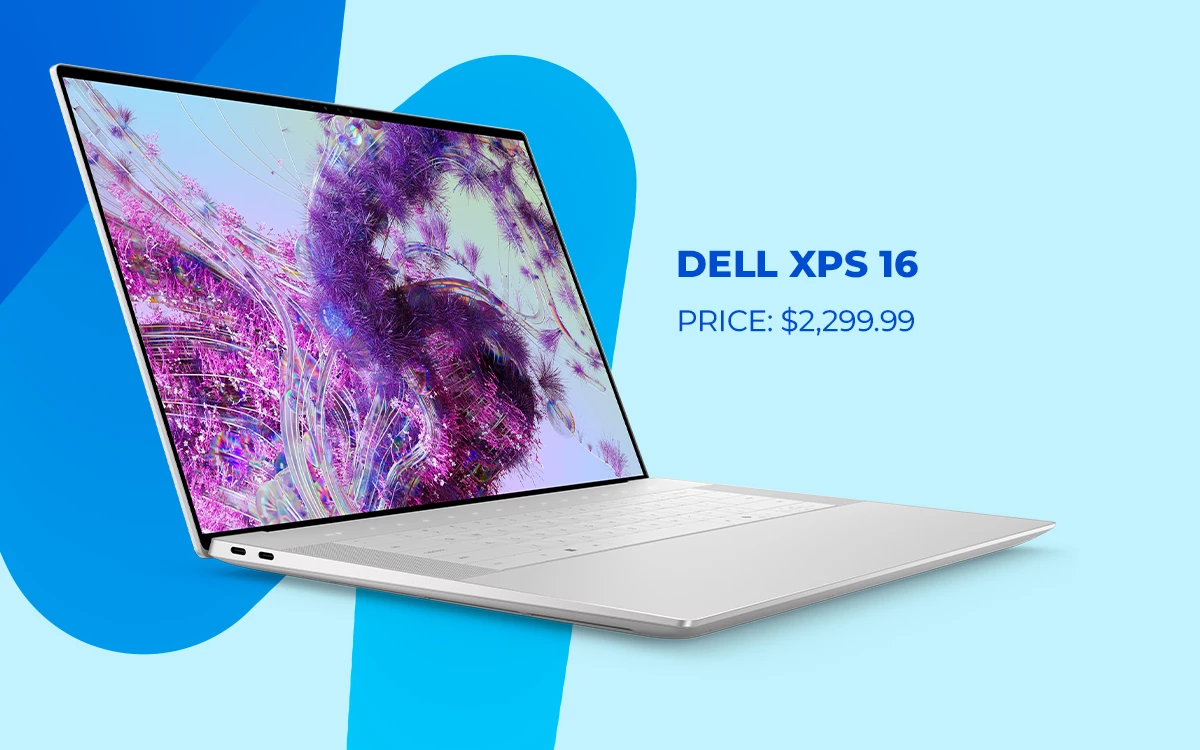
Key Features
- Big display showing more workspace for photos
- Factory-calibrated wide-gamut color support
- Powerful GPU options to handle heavy workflow
- Large memory & fast storage
- Premium build with an aluminum chassis and minimal bezels
- High-quality audio and quad-speakers
- Thunderbolt / USB-C ports + microSD card reader
Pros and Cons
| Pros | Cons |
|---|---|
| Exceptional color fidelity | Users reported that the keyboard/touchpad is less comfortable |
| High graphics/CPU power to accelerate workflow | Certain ports are limited (for example, fewer USB-A, more USB-C) |
| Good connectivity (card reader + fast ports) | |
| More portable than many bulky 16-inch workstations |
5. Lenovo Yoga 9i Gen 8
The Lenovo Yoga 9i Gen 8 laptop is a sleek design laptop for users looking for flexibility. This 2-in-1 laptop lets users work conveniently without compromising on performance. The 14-inch OLED touchscreen is good for retouching photos. Besides, with a 360-degree hinge, image editors can seamlessly transition between laptop and tablet modes for versatility in their workflow.
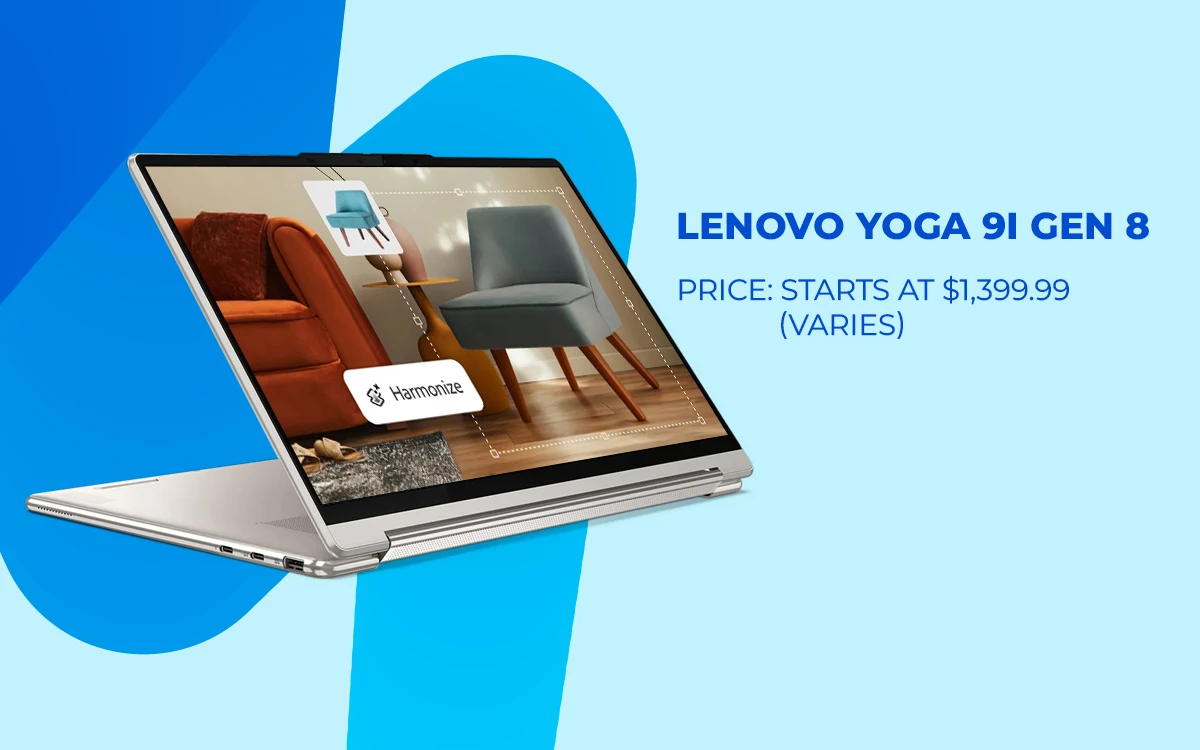
Key Features
- Fast performance
- Multi-touch gestures
- Converts between laptop and tablet modes
- Pen input for precise edits and annotations
- Vivid OLED display shows colors accurately
- Long-lasting battery supports work on the go
- Creator software integration for workflow efficiency
Pros and Cons
| Pros | Cons |
|---|---|
| Compact design is easy to carry | Limited ports may need adapters |
| Faster and more precise editing | A glossy screen can reflect light |
| Allows both portable and studio editing | |
| Stylus input reduces reliance on mouse/keyboard |
6. Lenovo ThinkPad P1 Gen 7
The Lenovo ThinkPad P1 Gen 7 is a robust workstation designed for avid photo editing users. This is more like a mobile workstation, allowing for working convenience during travel. The laptop combines premium build quality and offers standard performance, which has made it one of the top choices for advanced-level editing, complex retouching, and handling raw files.
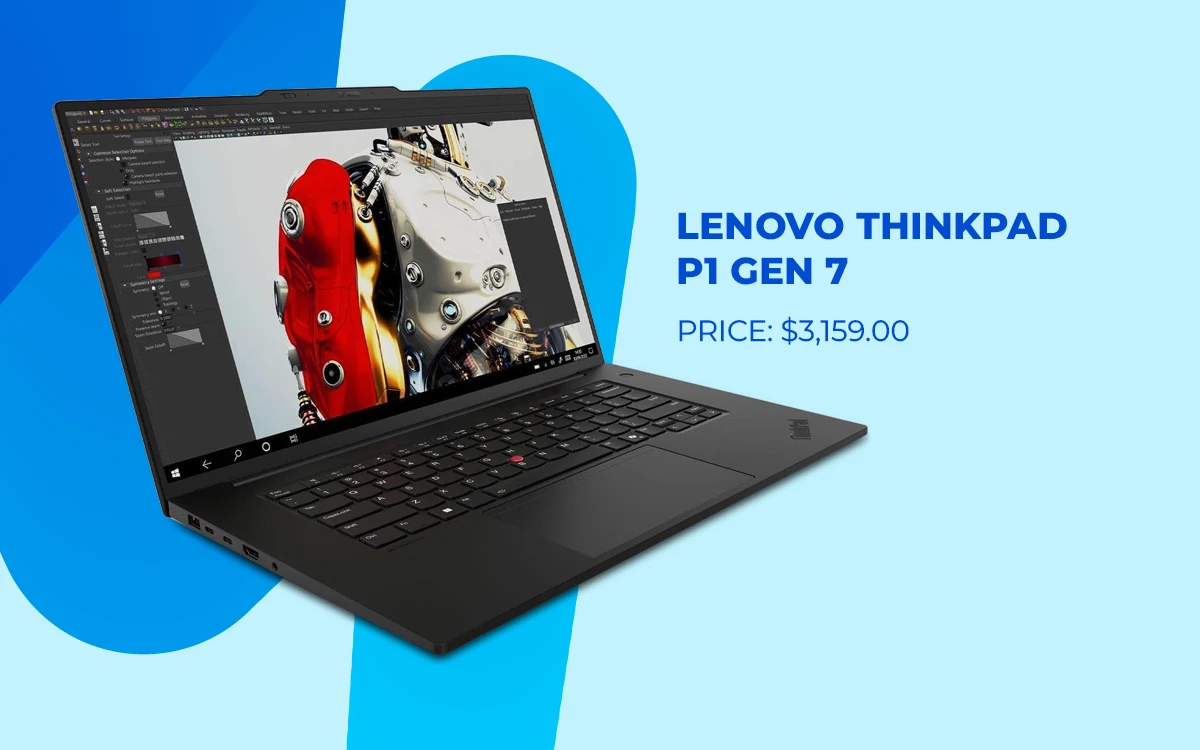
Key Features
- Enables mobile workflows
- Offers factory-calibrated color accuracy
- Working comfort with the build and keyboard
- Supports abundant memory and fast storage
- 16-inch display for more workspace and visibility
- Powerful graphics and processing for heavy editing
- Includes pro-grade ports: card reader, Thunderbolt, etc
Pros and Cons
| Pros | Cons |
|---|---|
| Accurate color display | May require cooling or a quieter environment |
| Connections with cameras, cards, and external monitors without adapters | Not beginner-friendly |
| Works on both static and moving environments | |
| AI integration and upgrade capacity |
7. Acer Swift Go 14
The Acer Swift Go 14 is a compact and sleek 14-inch laptop. It blends portability with color-accurate visuals and solid performance. Whether you work in a fixed location or travel, or alternate between office and home, this device will support your working area. With a strong display and a lightweight design, you can work efficiently without a bulky workstation.
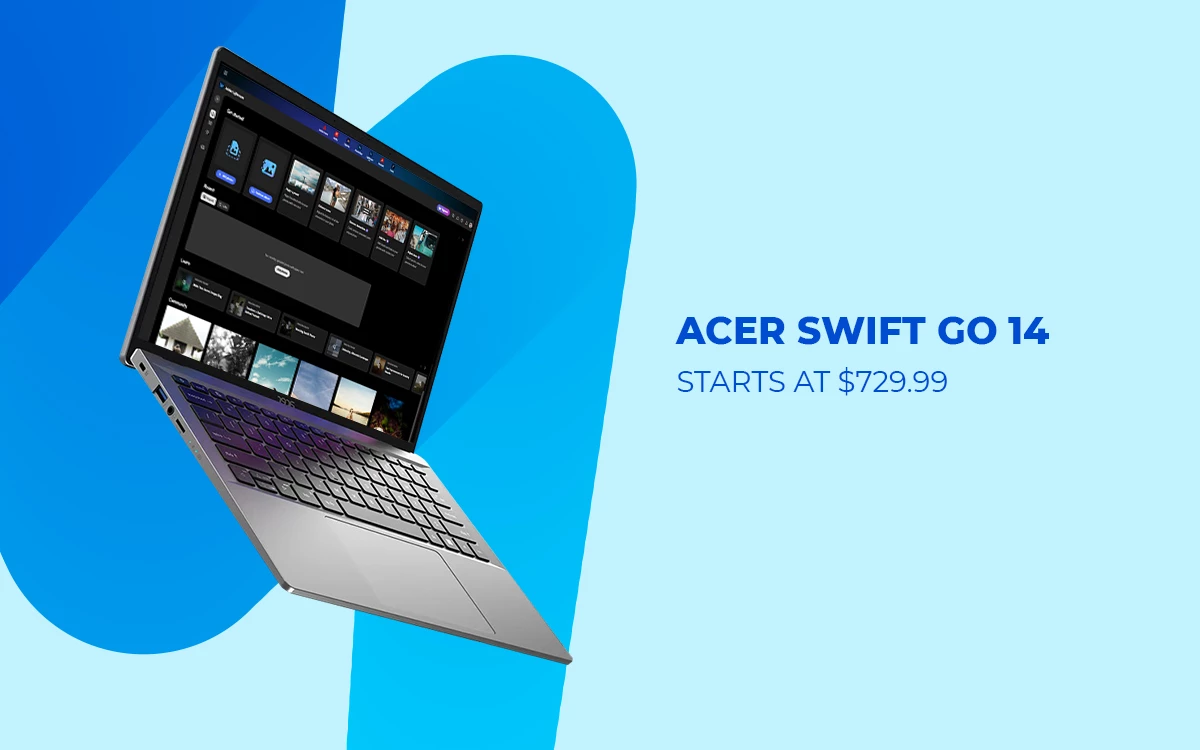
Key Features
- Wide-gamut screen options
- Powerful display for rich color and detail
- Intel Core Ultra series for responsive editing
- Fast SSD storage and RAM for handling large files
- Quiet design suitable for mobile use
- Solid display-to-weight ratio for minimal bulk
- Good port selection, including USB-C/Thunderbolt, HDMI, and microSD card reader
Pros and Cons
| Pros | Cons |
|---|---|
| Lightweight design and portable | Bright screen drains battery |
| Color-accurate display | Some models have a limited upgrade option |
| Good connectivity for cameras, card readers, and drives | |
| Versatile enough for studio/desk use or field editing |
8. Apple MacBook Air 13 M4
Apple’s MacBook Air 13-inch with M4 chip is another excellent laptop that offers impressive performance for photo editing. Its thin, and light portability makes it usable from anywhere, anytime. Photo editors and other users can view accurate colors, thanks to the Retina display. They can work comfortably as it operates noiselessly for long hours. By combining with Apple’s ecosystem, it allows users to make file transfers, color calibration, and workflow integration easily.
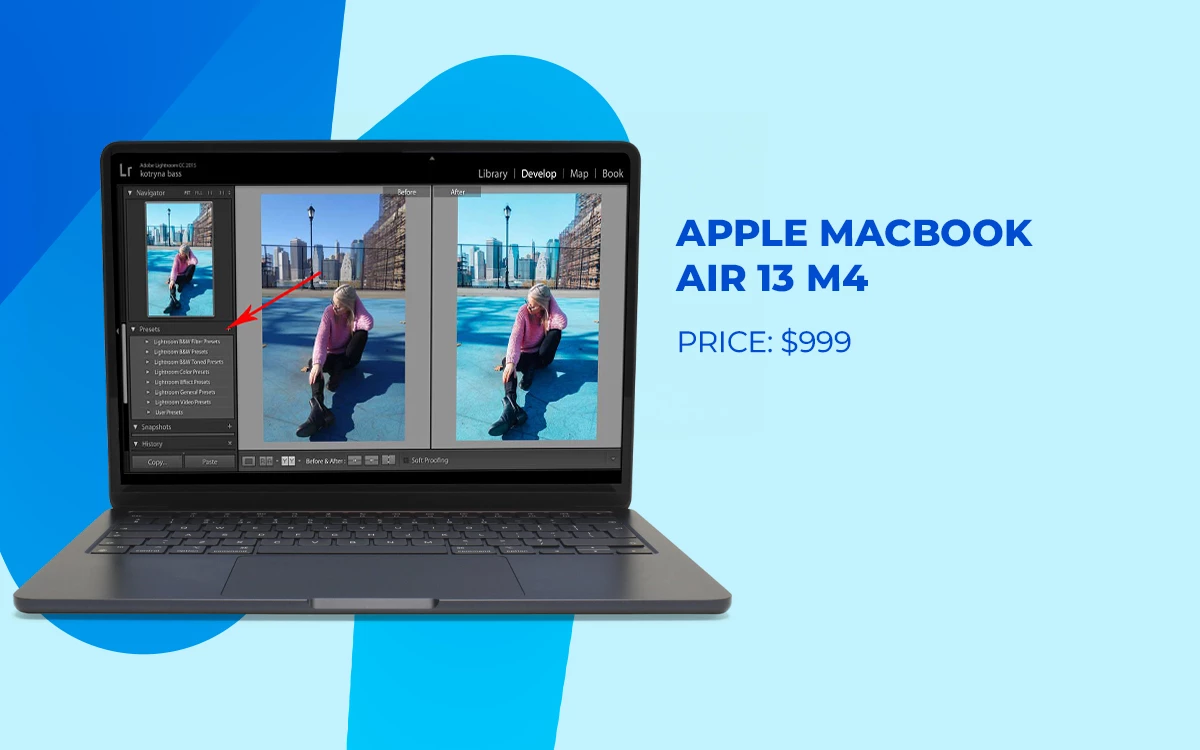
Key Features
- Lightweight and ultra-portable
- Fanless design for silent operation
- Fast processing of large RAW files
- Supports up to two external 6K displays
- Advanced webcams and microphones built in
- Color-accurate Retina display with wide gamut
- Support for external monitors and creator software workflows
Pros and Cons
| Pros | Cons |
|---|---|
| Compact design and portable | Memory/storage is fixed |
| Silent performance for distraction-free work | Only two USB-C/Thunderbolt ports |
| Shows colors accurately for both web and print | |
| Long battery supports editing sessions |
9. Apple MacBook Pro 14 M4
The MacBook Pro 14-inch (M4) is also a powerful tool for creating high-end edited photos. It combines professional-level power with portability, allowing users to edit pictures during travel and studio work. The laptop’s premium display displays accurate and synchronized visuals everywhere, in print and on the web. The new M4 chip supports working with large RAW files, multiple layers, or batch exports.
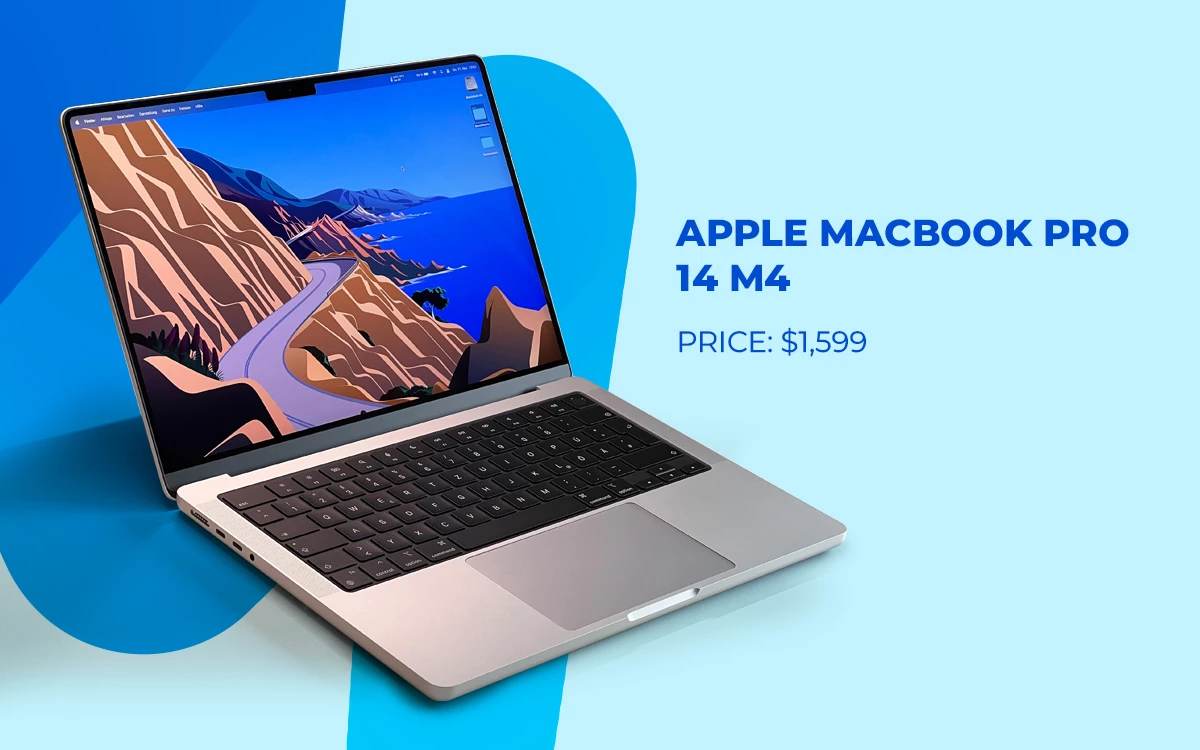
Key Features
- Brilliant mini-LED display
- Built-in SD card slot
- Multiple Thunderbolt ports
- All-day battery for mobile editing
- macOS optimized for Adobe and Capture One
- High brightness ideal for both indoor and outdoor editing
- M4 chip delivers fast, consistent performance
Pros and Cons
| Pros | Cons |
|---|---|
| High-quality display | High price |
| Easy handling of RAW files | Needs dongles for old ports |
| Portable and longer battery time | |
| Elegant professional look |
10. HP OMEN MAX 16
The HP OMEN MAX 16 is a powerful laptop that offers desktop-grade speed in a portable setup. It covers the facility of a large workspace, handles fast RAW files, and layered edits. Users can get top-tier performance, color-accurate panels for handling advanced edits and multitasking with mobility.

Key Features
- Large display with full DCI-P3 color
- High refresh rate screen
- Fast performance for RAW photo editing
- Dedicated GPU for smooth rendering
- Ample RAM and SSD for multitasking
- Multiple ports and an SD card reader
- Customizable performance settings via OMEN Hub
Pros and Cons
| Pros | Cons |
|---|---|
| Excellent color accuracy | Pricey |
| Fast and responsive | Noticeable fan noise |
| Offers plenty of connectivity | |
| Ideal for multitasking |
Is it Worth Investing in an Expensive Laptop for Photo Editing?
Yes, it is worth investing in an expensive laptop for photo editing if you want upgradeability, better cooling for heavy workloads, portable work support, and flexibility. Expensive laptops provide professional photographers, photo editors, and other professionals with color-accurate displays, powerful features to support editing, and fast performance for RAW editing, multitasking, and creative software.
While a compatible desktop setup contributes to handling large volume quality image creation processes, Laptops allow users to work on location and work anywhere within their suitability without sacrificing efficiency. Other reasons for considering laptops for photo editing are as follows.
- For new users or professionals who don’t work in a static environment
- Needing portability for studio, field, or client work
- Editing or previewing images on-site during photo shoots
- Collaborating remotely or while traveling between projects
- While working in smaller setups
- Presenting visuals directly to clients during meetings
- Using pen and touch displays for hands-on retouching
What Features Should I Look for in a Laptop for Photo Editing?
There are 7 features you should look for in a laptop for photo editing, those are: color-accurate display, processor performance, GPU power, RAM capacity, storage speed, port selection, and touch or stylus support. The reasons to consider these features are to ensure accurate observation, processing large files efficiently and quickly, and multitasking so that you can work fluently and create high-quality images.
- Color-Accurate Display
Choose a laptop having color accuracy and true-to-life tones and contrast. It will make the edited images appear consistent both on digital screens and prints. It is recommended to choose 100% sRGB or DCI-P3 coverage for professional accuracy.
- Processor Performance
To speed up laptop performance and the editing process, make sure the laptop has a strong CPU. It will accelerate file imports, effects, and rendering. Modern multi-core processors (like Intel i7 or Apple M-series) offer fast and smooth editing.
- GPU Power
Check the GPU power of the laptop. A capable graphics card handles various tasks, for example, high-resolution previews, layer-heavy edits, and improving response times in apps like Photoshop or Lightroom.
- RAM Capacity
Aim for laptops with more memory, as it allows multitasking without lag. Professional photo editing requires a minimum of 16GB of memory; you can use 32GB for extra comfort.
- Storage Speed
Check for the laptops’ SSDs. It loads and saves large RAW files instantly, reducing waiting time. If you choose an NVMe SSD will load faster for continuous workflows.
- Port Selection
The Laptop should have essential ports for connecting cameras, SD cards, and external drives. Look for USB-C/Thunderbolt and an SD card slot for working comfort.
- Touch or Stylus Support
Check the laptop’s touch system or stylus support. It enables precise retouching and masking directly on the screen, making your workflow feel intuitive.
How Photo Editing Trends Shape Laptop Requirements?
Photo editing trends bring new requirements and perspectives to the extension of use, which shape laptop requirements. One example is the rise of AI in photo editing, which contributes to improving laptops’ processing power, along with storage, RAM, and display. Modern laptops include built-in AI chips, resulting in faster editing, which helps cut down wait time and run editing features smoothly.
Some other photo editing trends that have shaped laptop requirements are listed as follows.
- Brighter, color-rich screens → Realistic image preview
- Faster processors and graphics → Smoother editing sessions
- Larger memory and quick storage → Handling big photo files
- Better port options → Connecting cameras and memory cards easily
- Touchscreen and stylus input → Hands-on retouching
- Strong Wi-Fi and cloud support → Online collaboration and sharing
What are the Best Computers for Photo Editing?
The best computers for photo editing are many, including Apple Mac Studio M4 Max (2025) for maximum performance, Acer Aspire TC for solid performance and budget friendliness, and Intel NUC 13 Extreme for flexibility and upgradability.
- Key Features of Apple Mac Studio M4 Max (2025): Apple M4 Max chip, up to 128GB RAM, up to 8TB SSD, multiple Thunderbolt ports, etc.
- Key Features of Acer Aspire TC: Intel Core i5/i7 processor, 8GB/16GB RAM, 256GB/512GB SSD, etc.
- Key Features of Intel NUC 13 Extreme: Intel Core i9-13600K processor, up to 64GB RAM, multiple M.2 slots, etc.
FAQ’s
Does display color accuracy matter for photo editing?
Yes, color accuracy matters for photo editing. Accurate displays contribute to maintaining consistent color tones across web and print media. Having a laptop with a 100% sRGB or DCI-P3 color gamut and a factory-calibrated display indicates you will see true-to-life colors.
What laptops support Adobe Photoshop and Lightroom best?
Apple MacBook Pro 14 M4, ASUS ProArt P16, Lenovo ThinkPad P1 Gen 7, and HP OMEN Max 16 support Adobe Photoshop and Lightroom best. These laptops have powerful CPUs, dedicated GPUs (NVIDIA RTX or Apple M-series chips), and color-accurate screens, which are the right features for smooth performance in Photoshop and Lightroom.
What screen size is ideal for photo editing work?
A 15- to 16-inch display is considered ideal for photo editing work as it offers ample room for editing panels, layers, and color tools. A 14-inch screen is suitable for users who want portability.
How much RAM do I need for photo editing?
A minimum of 16GB RAM is recommended to use for photo editing, as it ensures smooth multitasking and handling high-resolution RAW files. Though large-scale photo editors or advanced-level users working on layered compositions use 32GB or more, which contributes to the editing workflow through fast preview, better rendering, etc.
Which processor is best for photo editing laptops?
Multi-core, high-speed processors are the best for photo editing in laptops, for example, Intel Core i7/i9 (13th or 14th Gen), AMD Ryzen 7/9, or Apple M3/M4 chips. These processors are capable of handling modern image editing, effects and filters, rendering, and AI tools with minimum lag and maximum efficiency.
